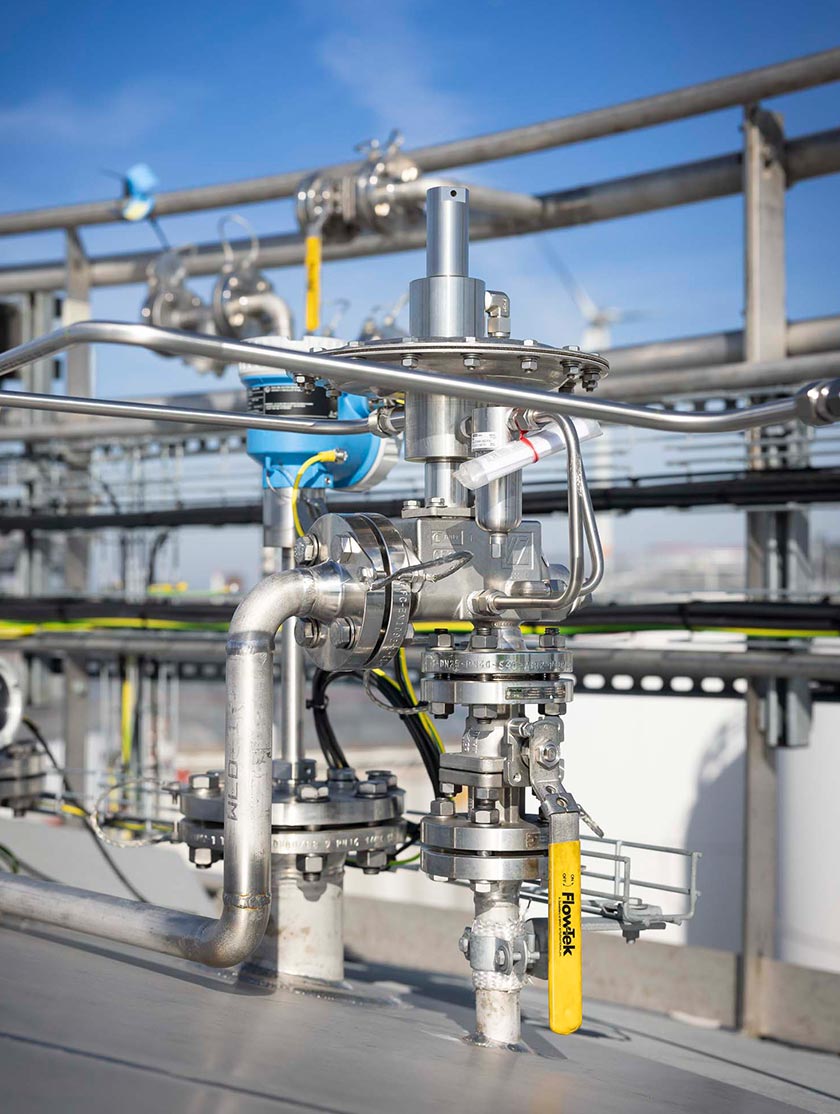Key Factors for Sizing Pressure Reducing Regulators Correctly
Key Factors to Consider When Sizing a Pressure Reducing Regulator
A pressure reducing regulator (also referred to as pressure regulator) is a key component in fluid and gas systems, designed to automatically reduce high inlet pressure to a stable, desired outlet pressure. Properly sizing a pressure reducing regulator ensures system efficiency, safety, and durability. Selecting the wrong size pressure reducing regulator can lead to pressure fluctuations, equipment damage, or operational failures. This article describes the key factors to consider when sizing a pressure reducing regulator for a specific application.
1. Inlet Pressure Range
The first factor to consider is the inlet pressure: the inlet pressure of the liquid or gas before it enters the pressure reducing regulator. Knowing the maximum, minimum, and rated inlet pressures is essential because the pressure reducing regulator must be able to handle the highest expected pressure without failure or excessive wear. Selecting a pressure reducing regulator with a rated inlet pressure range prevents pressure spikes that can damage downstream equipment or cause regulator failure.
2. Desired Outlet Pressure
Outlet pressure is the controlled pressure downstream of the pressure reducing regulator. Determine the stable, reduced pressure required for your application. The pressure reducing regulator must be able to maintain this outlet pressure continuously, despite changes in inlet pressure or flow rate. It is important to determine not only the rated outlet pressure but also the allowable pressure range for optimum performance.
3. Flow Rate Requirements
The size of the pressure reducing regulator is largely determined by the flow rate of the liquid or gas flowing through the system. Flow rates are typically measured in cubic feet per minute (SCFM) for gases or gallons per minute (GPM) for liquids. The pressure reducing regulator must accommodate the maximum flow demand without causing a drop in outlet pressure or cavitation.
- Regulators that are too small can cause pressure drops or vibration.
- Regulators that are too large can cycle excessively, reducing their life.
4. Type of Fluid or Gas
Different fluids and gases have unique properties, such as compressibility, viscosity, and corrosiveness, that affect pressure reducing regulator performance. For example, gases such as natural gas and air are compressible, while liquids are incompressible, which affects the flow behavior of the regulator.
- Consider corrosiveness, abrasiveness, or particulates in the fluid that may require specialized materials or designs.
5. Temperature Range
Operating temperature affects pressure reducing regulator materials and sealing components. Ensure the pressure reducing regulator you choose is certified for the ambient and process temperature range of your application. Extreme temperatures can cause material expansion/contraction or seal degradation, which can lead to leaks or failure.
6. Pressure Drop Across the Regulator
The pressure difference between inlet and outlet pressure determines the load on the pressure reducing regulator. Higher pressure drops require regulators designed to withstand greater internal stresses. A pressure drop calculation helps verify proper regulator design and avoid problems such as vibration or instability.
7. Material of Construction
Select materials compatible with the process fluid and operating environment. Typical materials include brass, stainless steel, and aluminum.
- For aggressive fluids or sanitary applications, stainless steel or special alloys may be required to prevent corrosion or contamination.
8. End Connection Type and Size
Check for end connection types and sizes compatible with the piping system, such as threaded, flanged, or welded connections. Proper sizing prevents installation problems and leaks and ensures mechanical integrity.
9. Safety and Certification Requirements
Depending on the application (industrial, medical, or food processing), pressure reducing regulators may be required to meet industry standards such as ASME, ISO, or FDA. Check for appropriate certifications regarding pressure ratings, material compatibility, and hygiene.
10. Environmental Conditions
Consider external factors such as exposure to moisture, dust, vibration, or weather that may affect pressure reducing regulator selection. For harsh environments, select regulators with protective housings or rugged construction.
Conclusions
Sizing a pressure reducing regulator requires a thorough understanding of inlet and outlet pressures, flow rates, fluid characteristics, temperature conditions, and application-specific requirements. Accurate sizing maximizes system efficiency, provides consistent outlet pressure, protects downstream equipment, and extends regulator life. Working with experienced suppliers and utilizing performance data sheets and sizing calculators can optimize pressure reducing regulator selection to meet the specific needs of the application.
By carefully evaluating the key factors described above, systems engineers and designers can ensure optimum performance from pressure reducing regulators tailored to their specific operating requirements.
Ensure system reliability and avoid downtime with the right pressure reducing regulator. Cashco offers dependable models and expert support.
Explore all models here or complete the Regulator Sizing Form for fast and accurate guidance.
Visualize How A Pressure Reducing Regulator Operates
This animation helps you better understand internal components like the diaphragm and valve—useful for identifying potential performance issues.





